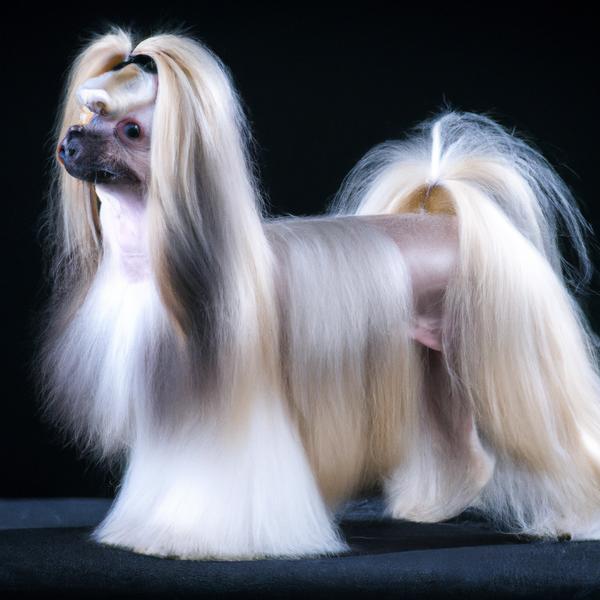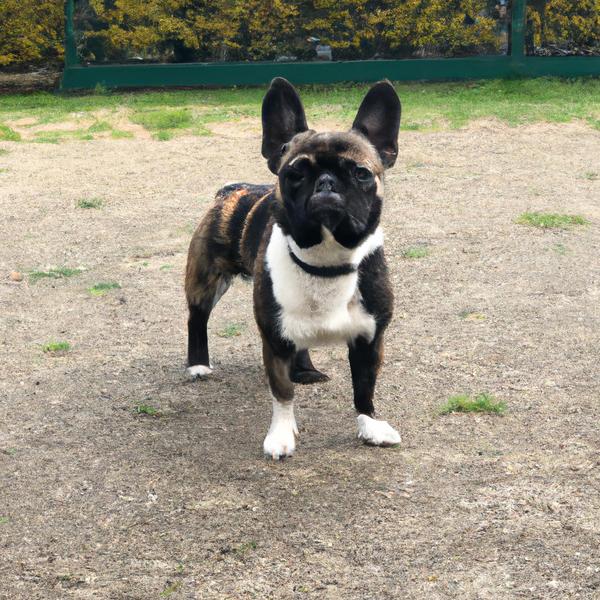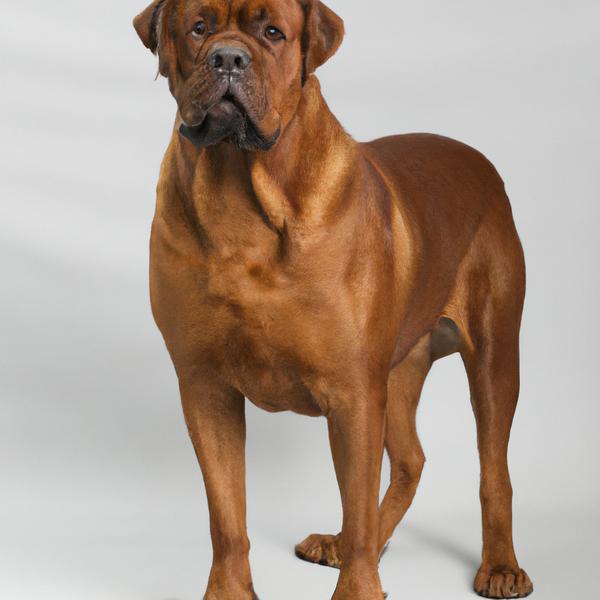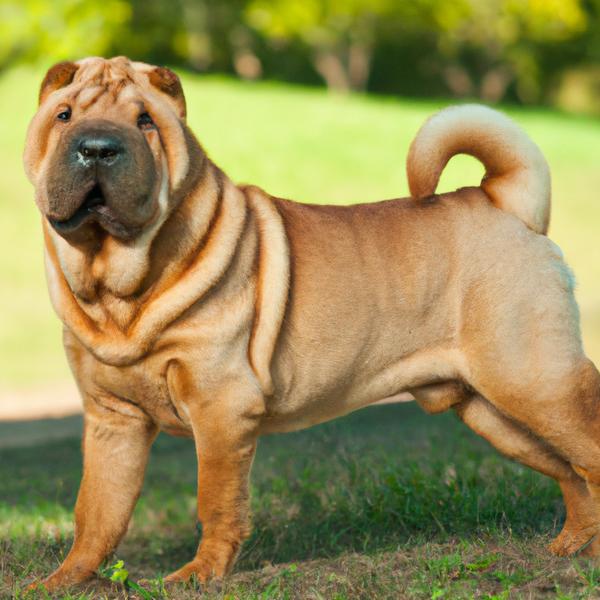Petite Labradoodle vs. Chinese Shar-Pei: Breed Differences and Similarities
Hypoallergenic
Are Petite Labradoodles or Chinese Shar-Peis hypoallergenic, or neither?
Unfortunately, neither Petite Labradoodle nor Chinese Shar-Pei are hypoallergenic, which may not make them the best choice for dog lovers who suffer from pet allergies.
Watchdog Ability
Which dog breed makes a better watchdog, the Petite Labradoodle or Chinese Shar-Pei?
Petite Labradoodles are decent watchdogs - they'll alert their owner if something seems amiss.
Chinese Shar-Peis aren't great guard dogs; they tend to just watch without taking action.
Ancestry
What are the origins of Petite Labradoodle and Chinese Shar-Pei breeds?
Cocker Spaniel, Poodle and Labrador Retriever
Chow Chow
Date of Birth
When were Petite Labradoodle and Chinese Shar-Pei breeds first developed?
2000's
206 BC
Eye Color Possibilites
What are the eye colors of Petite Labradoodle and Chinese Shar-Pei dogs?
Brown
Brown
Nose Color Possibilites
What are the natural nose colors of Petite Labradoodle and Chinese Shar-Pei?
Black
Black
Coat Color Possibilites
What are the natural colors of the coat for Petite Labradoodle and Chinese Shar-Pei breeds?
Black
Brown
Fawn
Black
Fawn
Cream
Red
Coat Length
What is the typical coat length for Petite Labradoodle and Chinese Shar-Pei breeds?
The coat of Petite Labradoodle and Chinese Shar-Pei dogs falls in the medium-length category.
Coat Density
What is the density of the coat of Petite Labradoodle and Chinese Shar-Pei?
Coat Texture
What is the hair texture of Petite Labradoodle and Chinese Shar-Pei?
Curly
Straight
Litter Size
What is the usual litter size for Petite Labradoodle and Chinese Shar-Pei?
A Petite Labradoodle can have a litter of 5-10 puppies on average. However, it's worth noting that the size of the litters can vary greatly. Factors that can influence litter size include the health of the mother, breeding history, and genetics.
A Chinese Shar-Pei can have a litter of 8-12 puppies on average. However, it's worth noting that the size of the litters can vary greatly. Factors that can influence litter size include the health of the mother, breeding history, and genetics.
Major Concerns
What are the major health concerns for Petite Labradoodle and Chinese Shar-Pei breeds?
Epilepsy
Diabetes
Hypothyroidism
Eye Diseases and Disorders
Entropion
Hip Dysplasia
Kidney Problems
Chinese Shar-Pei Fever
Mast Cell Tumors
Minor Concerns
What minor health issues should be kept in mind when owning Petite Labradoodle and Chinese Shar-Pei?
Ear Infections
Allergies
Joint Dysplasia
Patellar Luxation
Elbow Dysplasia
Demodectic Mange
Skin Problems
Heat Sensitivity
Occasional Tests
What occasional tests are recommended for Petite Labradoodle and Chinese Shar-Pei breeds?
Ear Examination
Internal Imaging (x-ray, CT scan, MRI, etc.)
Blood And Urine Analysis
Yearly Physical Examination
Blood Tests and Blood Count
Eye Examinations (both internal as well as external)
X-rays of various parts of the skeletal system
Dental and Oral Examinations
Eye
Hip
Elbow
Blood
Knee
X-Rays
Physical Examination
Energy
How do the energy levels of Petite Labradoodles and Chinese Shar-Peis compare?
Petite Labradoodle and Chinese Shar-Pei breeds are known for their high energy levels, so if you're looking for a more low-key dog, these breeds may not be the best choice.
Exercise Needed
Petite Labradoodle vs Chinese Shar-Pei exercise need comparison.
The Petite Labradoodle and Chinese Shar-Pei breeds require a moderate amount of physical activity to maintain a healthy lifestyle. They are ideal for people who have a moderate amount of time to devote to their pets and enjoy regular physical activity themselves. They also make great family pets as they have the energy to keep up with children and the temperament to be great companions.
Tendency to Bark
Do Petite Labradoodles or Chinese Shar-Peis bark more/less frequently?
Compared to most other breeds, Petite Labradoodle and Chinese Shar-Pei tend to be less vocal and bark less frequently. They typically only bark when necessary, such as to communicate or alert their owner, and do not bark excessively, especially when left alone.
Activity Level
Which breed has higher energy, Petite Labradoodles or Chinese Shar-Peis?
Both Petite Labradoodle and Chinese Shar-Pei are medium-energy dogs that enjoy socializing and playing with other dogs. They may engage in casual or sustained games of chase, and occasionally have bursts of barking or racing around the house.
Walks per Week
How many miles should Petite Labradoodle or Chinese Shar-Pei walk each week?
There's really no limit to how far you walk your dog as long as they're comfortable. For Petite Labradoodle, it's at least 7 miles / week. Just remember to build distance and stamina gradually over time.
There's really no limit to how far you walk your dog as long as they're comfortable. For Chinese Shar-Pei, it's at least 8 miles / week. Just remember to build distance and stamina gradually over time.
Activity per Day
Do Petite Labradoodles or Chinese Shar-Peis require more exercise?
In general most Petite Labradoodles usually need at least 90 minutes of exercise daily. This can be spread across the day and include all sorts of high-energy activities, like walking, running and playing.
In general most Chinese Shar-Peis usually need at least 60 minutes of exercise daily. This can be spread across the day and include all sorts of high-energy activities, like walking, running and playing.
Grooming
Which breed is easier to maintain in terms of grooming, Petite Labradoodles or Chinese Shar-Peis?
Petite Labradoodle and Chinese Shar-Pei are breeds of dogs that are known for their low grooming needs.
Brushing Frequency
What is the recommended brushing frequency for Petite Labradoodle and Chinese Shar-Pei dogs?
Ideally, both Petite Labradoodle and Chinese Shar-Pei should be brushed at least 2 or 3 times a week (preferably daily) to improve shedding.
Brushing Tools
What brushing tools are used for Petite Labradoodles and Chinese Shar-Peis?
Pin Brush
Dematter
Deshedder
Nail Clipper
Slicker Brush
Nail Clipper
Cups
How much food should be given to Petite Labradoodle or Chinese Shar-Pei in cups?
For an average 15-30 pound (7 - 14 kg) Petite Labradoodle feed 1.5 cups daily. But, keep in mind, the amount you feed is going to be dependent on the quality of the food you are feeding.
For an average 45-60 pound (20 - 27 kg) Chinese Shar-Pei feed 3 cups daily. But, keep in mind, the amount you feed is going to be dependent on the quality of the food you are feeding.
Daily Cost
Which breed has a higher daily cost, Petite Labradoodle or Chinese Shar-Pei?
The average cost of a Petite Labradoodle is somewhere $1.10 - $1.40 per day.
The average cost of a Chinese Shar-Pei is somewhere $1.70 - $2.00 per day.
Monthly Cost
Which breed has a higher monthly cost, Petite Labradoodle or Chinese Shar-Pei?
The average per month expenses of a Petite Labradoodle is between $35 - $42. This makes an average of $420 - $504 per year. It will be on the higher side when the dog is still small because it will need more frequent visits to the vet, shots.
The average per month expenses of a Chinese Shar-Pei is between $48 - $63. This makes an average of $576 - $756 per year. It will be on the higher side when the dog is still small because it will need more frequent visits to the vet, shots.
Intelligence
Comparing Intelligence: Petite Labradoodles vs Chinese Shar-Peis
Petite Labradoodle is highly intelligent and very trainable.
Chinese Shar-Peis are average in obedience intelligence but have a high IQ and may cause trouble if left unsupervised.
Affection Dependance
Which is the more affectionate dog breed: Petite Labradoodle vs Chinese Shar-Pei?
Dog Friendly
Which breed is more sociable with other dogs: Petite Labradoodle or Chinese Shar-Pei?
Petite Labradoodles are generally very friendly towards other dogs, with a happy and affectionate temperament.
Chinese Shar-Peis are less friendly towards other dogs, but can improve with socialization.
Playfulness
Which breed is more playful between Petite Labradoodle and Chinese Shar-Pei?
Petite Labradoodles are very playful, so adopting an older one might be a better option for a more relaxed experience.
Chinese Shar-Peis are a playful breed that needs daily playtime to be happy.
Trainability
How do the trainability levels of Petite Labradoodles and Chinese Shar-Peis compare?
The Petite Labradoodle is highly intelligent and eager to please, making it a great choice for both novice and experienced dog owners due to its easy trainability.
Chinese Shar-Peis are usually easy to train but require consistency to fully obey commands.
Compare Petite Labradoodle with other breeds

Cavalier King Charles Spaniel
Petite Labradoodle vs Cavalier King Charles Spaniel

Cava-Tzu
Petite Labradoodle vs Cava-Tzu

Silkzer
Petite Labradoodle vs Silkzer

Standard Ratzer
Petite Labradoodle vs Standard Ratzer

French Bullhuahua
Petite Labradoodle vs French Bullhuahua

Griffon-Pei
Petite Labradoodle vs Griffon-Pei

French Bull Rat Terrier
Petite Labradoodle vs French Bull Rat Terrier

Welsh Toy Fox Terrier
Petite Labradoodle vs Welsh Toy Fox Terrier

Dogue Brasileiro
Petite Labradoodle vs Dogue Brasileiro

Welsh Terrier
Petite Labradoodle vs Welsh Terrier

Bloodahouli
Petite Labradoodle vs Bloodahouli

Chinese Shar-Pei
Petite Labradoodle vs Chinese Shar-Pei
